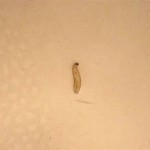How To Get Hair Dye Off My Bathroom Sink
Hair dye stains on a bathroom sink are a common consequence of at-home hair coloring. The pigments in hair dye are designed to adhere strongly to hair, making them equally tenacious on porous surfaces like bathroom sinks. Prompt and appropriate cleaning methods are crucial to prevent permanent discoloration. The effectiveness of stain removal depends on the type of sink material, the type of dye used, and the time elapsed since the stain occurred. This article aims to provide a comprehensive guide on various techniques to effectively remove hair dye stains from bathroom sinks, covering a range of approaches from gentle household solutions to more robust chemical cleaners.
Immediate Action: The Key to Prevention
The most effective strategy for dealing with hair dye stains is prevention. Before beginning the hair dyeing process, protecting the surrounding surfaces is highly recommended. Covering the sink and countertop with old towels, newspapers, or plastic sheeting can significantly reduce the likelihood of stains. However, even with precautions, spills can occur. If dye lands on the sink, immediate action is essential. The longer the dye sits, the more deeply it will penetrate the surface, making removal more difficult.
Once a spill occurs, the first step is to blot the area immediately with a clean, damp cloth or paper towel. Avoid rubbing, as this can spread the stain and further embed the dye into the sink's surface. Continue blotting until no more dye is transferred to the cloth. After blotting, rinse the area thoroughly with water. This initial action can often remove the majority of the dye, especially if the spill is fresh and the sink surface is relatively non-porous. Even if the stain appears to be gone, it is prudent to proceed with a more thorough cleaning method to ensure complete removal of any residual dye particles.
Gentle Cleaning Solutions: Everyday Household Items
For fresh or less stubborn stains, beginning with gentle cleaning solutions is advisable. These options minimize the risk of damaging the sink's finish and are readily available in most households. One common and effective solution is dish soap. Its grease-cutting properties can help lift the dye particles from the sink's surface. Simply apply a small amount of dish soap to a damp cloth or sponge and gently scrub the stained area. Rinse thoroughly with water and repeat the process if necessary.
Another readily accessible option is baking soda. Its mild abrasive qualities make it suitable for removing stains without causing significant scratching. To use baking soda, create a paste by mixing it with a small amount of water. Apply the paste to the stained area and let it sit for several minutes. Gently scrub the area with a soft cloth or sponge, then rinse thoroughly with water. Baking soda is particularly effective on porcelain and ceramic sinks but should be used with caution on more delicate surfaces like acrylic or cultured marble, as excessive scrubbing could potentially cause damage. Regular toothpaste (non-gel) can also be used in a similar fashion to baking soda, leveraging its mild abrasive properties to lift the stain.
Vinegar, particularly white vinegar, is another versatile household cleaner that can be effective against hair dye stains. Its acidity helps to break down the dye molecules, making them easier to remove. To use vinegar, dampen a clean cloth with white vinegar and apply it to the stained area. Let it sit for several minutes to allow the vinegar to penetrate the stain. Then, gently scrub the area and rinse thoroughly with water. For more stubborn stains, consider creating a poultice by mixing vinegar with baking soda to form a paste. This combination leverages the cleaning power of both ingredients. However, exercise caution when using vinegar on certain types of sinks, as its acidity can potentially damage sensitive materials like natural stone.
Stronger Stain Removal Methods: When Gentle Doesn't Suffice
When gentle cleaning solutions fail to completely remove hair dye stains, more potent methods are necessary. However, it is paramount to exercise caution and test any stronger cleaning agent on an inconspicuous area of the sink first to ensure it does not damage the surface. Protective gear, such as gloves and eye protection, is recommended when working with these solutions.
One effective option is rubbing alcohol (isopropyl alcohol). Its solvent properties can dissolve the dye molecules, making them easier to remove. Dampen a clean cloth or cotton ball with rubbing alcohol and gently blot the stained area. Avoid rubbing vigorously, as this can spread the stain. Allow the alcohol to sit on the stain for a few minutes before wiping it away with a clean cloth. Rinse thoroughly with water. Rubbing alcohol is generally safe for most sink surfaces but should be used with caution on acrylic or painted surfaces, as it can potentially damage the finish.
Another powerful stain remover is hydrogen peroxide. Its oxidizing properties can bleach the dye molecules, effectively lightening or removing the stain. Apply a small amount of 3% hydrogen peroxide to a clean cloth or cotton ball and gently dab it onto the stained area. Let it sit for several minutes, but no longer than 30 minutes, before wiping it away with a clean cloth. Rinse thoroughly with water. Hydrogen peroxide can be effective, particularly on light-colored sinks, but it's essential to test it on an inconspicuous area first to ensure it does not discolor the sink's surface. Prolonged exposure to hydrogen peroxide can lighten or damage certain materials.
For particularly stubborn stains, a commercial stain remover specifically designed for bathroom surfaces may be necessary. These products often contain stronger chemical agents that can effectively dissolve and lift the dye molecules. However, it is crucial to carefully read and follow the manufacturer's instructions. Test the product on an inconspicuous area first to ensure compatibility with the sink material. Wear gloves and eye protection during application and ensure adequate ventilation in the bathroom. Rinse the area thoroughly with water after using the stain remover.
In extreme cases, a bleach solution may be considered. However, bleach is a harsh chemical and should be used as a last resort due to its potential to damage or discolor the sink surface. If using bleach, dilute it with water according to the manufacturer's instructions. Apply the diluted solution to the stained area with a clean cloth or sponge. Let it sit for a very short period, no more than a few minutes, before rinsing thoroughly with water. Wear gloves and eye protection and ensure adequate ventilation. Avoid using bleach on colored sinks or sinks made of delicate materials like natural stone or acrylic.
Special Considerations for Different Sink Materials
The type of material a bathroom sink is made of significantly impacts the effectiveness of different stain removal methods. Porcelain and ceramic sinks are relatively durable and can withstand a wider range of cleaning agents, including mild abrasives like baking soda and stronger chemicals like bleach. However, even with these materials, excessive scrubbing or prolonged exposure to harsh chemicals can potentially damage the finish.
Acrylic and cultured marble sinks are more delicate and susceptible to damage from abrasive cleaners and harsh chemicals. When cleaning these types of sinks, it's best to start with gentle cleaning solutions like dish soap or vinegar. Avoid using baking soda, scouring pads, or bleach, as these can scratch or discolor the surface. If stronger stain removal is necessary, test the product on an inconspicuous area first and limit the exposure time.
Natural stone sinks, such as granite or marble, are porous and can be easily stained by hair dye. These types of sinks require special care and should be cleaned with pH-neutral solutions specifically designed for natural stone. Avoid using acidic cleaners like vinegar or lemon juice, as they can etch or damage the stone's surface. Blot spills immediately and use a soft cloth or sponge to clean the area. Consider applying a sealant to the sink to help protect it from future stains.
Stainless steel sinks are generally resistant to staining and can be cleaned with a variety of methods. However, abrasive cleaners can scratch the surface, so it's best to use gentle solutions like dish soap or vinegar. To remove stubborn stains, try applying a paste of baking soda and water. Rinse thoroughly with water and dry with a soft cloth to prevent water spots.

How To Get Hair Dye Off Your Sink Tub Or Shower

How To Remove Hair Dye Stains From Bathroom Sink No Scrubbing Works Like Magic

How To Remove Hair Dye Stains From Sink Dependable Tips For Home Use

How To Get Hair Dye Off Sinks 6 Super Easy Ways

How To Remove Hair Dye From Sink Get Those Stains Off

How To Remove Hair Dye Off A Bathroom Sink

How To Remove Hair Dye From Your Sink And Other Bathroom Surfaces Hometalk

How To Remove Hair Dye From Sink Design Swan

Remove Hair Dye From Sinks And Countertops With Bar Keepers Friend Removal Cleaning S Clean Sink

How To Remove Semi Permanent Hair Dye From Bathroom
Related Posts







